
How Private Equity is Adapting to Shifting Market Dynamics
-
bookmark
-
print
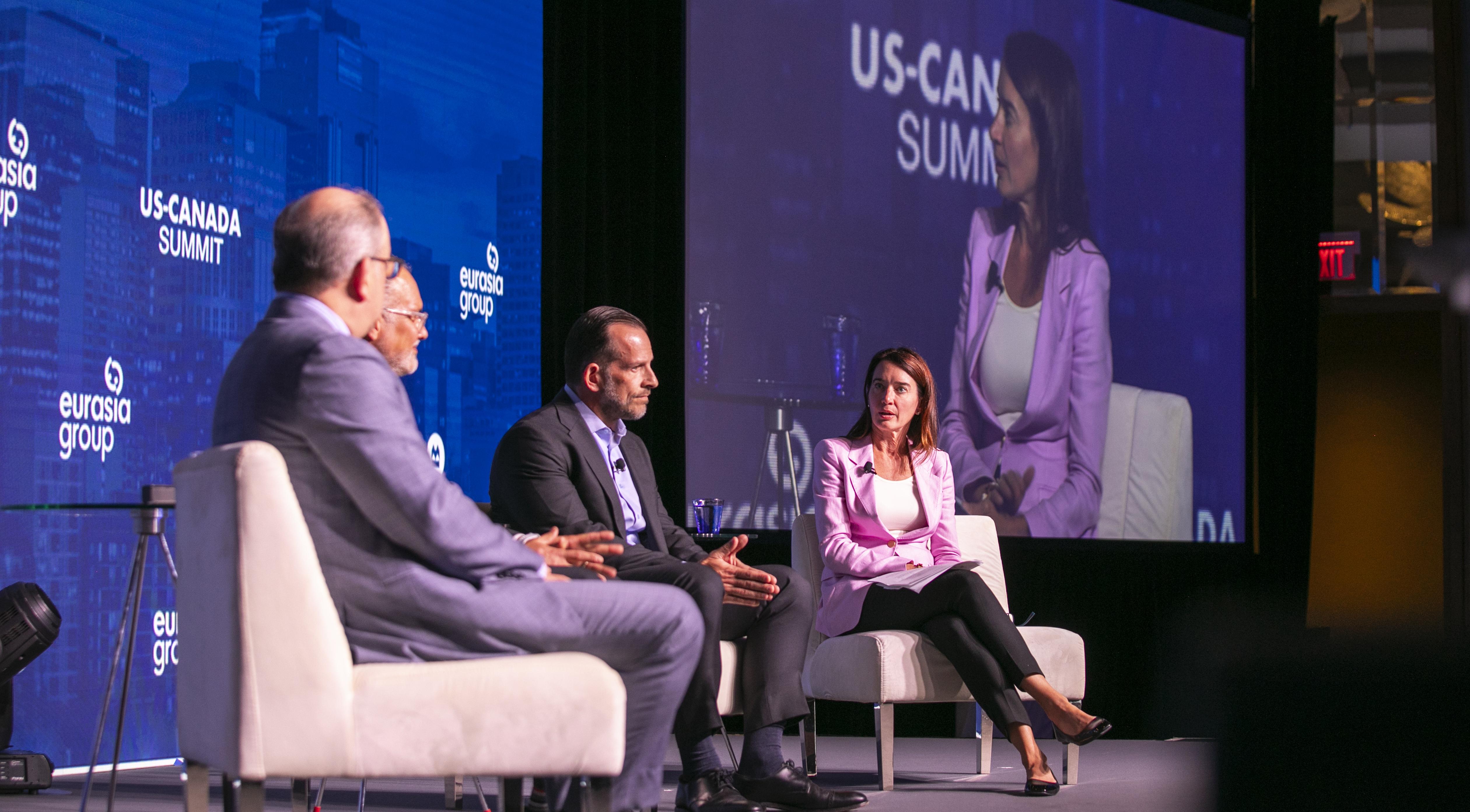


Private equity investors are cautiously optimistic about North American markets after a tough past few years. Despite enduring a slew of macroeconomic challenges and a high interest rate environment, there is a growing sense that investors and businesses are adapting to these changing markets.
This shift could lead to more deals in the year ahead, which was the focus of the panel discussion I led, “The Power of Positive Thinking: The Outlook for Private Equity,” at the second annual US-Canada Summit hosted by BMO and Eurasia Group.
Our panel of experts included:
-
Jonathan Hausman, Chief Strategy Officer, Ontario Teachers’ Pension Plan
-
Martin Longchamps, Executive Vice-President and Head of Private Equity, CDPQ
-
Mark Weinberg, Partner, Head of Private Equity, 26North
Here are some of the key takeaways from our conversation:
Leading the acceleration
While the Bank of Canada and the European Central Bank have eased rates in recent weeks, Jonathan Hausman from Ontario Teachers’ told the audience that we shouldn’t expect “a dramatic reduction in interest rates.”
With the pandemic’s ultra-low rates and an abundance of liquidity now behind us, firms are using different tools than they have in the past to get deals going again. That includes carve-outs, continuation vehicles and profit sharing with employees, among other options. In addition, he suggested there will be a consolidation of large private equity firms, while ticket sizes will get larger due to the added risk in the market.
Martin Longchamps of CDPQ shared Hausman’s positive view of what’s ahead, saying he’s “pretty optimistic that the market is going to come back.” He pointed to the fact that “the debt market is roaring” both because of the private debt markets and the banks lending again. With a lot of dry powder in the market, he thinks there will be “a significant uptick in M&A in the next six months to the next year.”
What’s yet to come is a narrowing in the bid-ask spread. Longchamps added that private equity players don’t like to sell their companies at a discount, but they still need buyers to come closer to asking prices. Since there hasn’t been a recession, companies have grown into their valuations over the past couple of years. That should make them more attractive than they would have been perhaps two years ago when everything was selling at a premium.
It’s only a matter of time – perhaps after the U.S. election in November – before the spread will narrow and the market will move again, said Longchamps. “We’re going to see a significant uptick in M&A because the LPs who invest in GPs want their money back.”
Managing in challenging markets
Since launching in Fall 2022, 26North has raised roughly $22 billion in capital across private equity, credit and insurance. Key to 26North’s strategy is philosophical and economic alignment, said 26North Head of Private Equity Mark Weinberg. He noted that the firm’s partners have committed significant personal capital to the firm’s strategies.
26North sees ample opportunity in the middle and upper middle market, particularly as other alternatives firms have gotten larger. They also see opportunities in Canada.
According to Weinberg, generating alpha in the current environment favors value investors and firms experienced in underwriting cash flow, and creating value through complex transaction types such as corporate carve-outs, distressed investing, partnerships, or identifying businesses not fully appreciated by the market. With multiple expansion under pressure, “operationally-oriented investing is probably more important than ever,” Mark explained. “Helping companies you’re invested in increase their margins and pursue a vision – rather than just squeezing costs – is key.”
Hausman stated that because both the abundance of capital and a hyper-globalized economy no longer exist, firms must have the right skills to manage a more challenging and complex global environment of internationally optimized tax, labor and regulatory issues.
Multiple expansion is under pressure, so increasing margins is required. You also have to be able to help the companies you invest in take advantage of global digitization, such as finding ways to use technologies like artificial intelligence (AI) and managing climate change by making a serious commitment to being part of the transition to the low-carbon economy. Those attributes matter as value drivers and those companies will be more attractive to buyers at a higher price.
Understanding market disruptors
Private debt has grown exponentially over the past decade, and “frankly, it’s going to continue gaining share,” Longchamps told the audience.
Another market disruptor is AI. Not only are private equity firms starting to use AI within their own operations to increase productivity – Hausman said his company is using it at his firm – but they are looking at the companies they’ve invested in to see how they can use it to improve their businesses and “leapfrog” ahead in their industries.
Considering ESG
Longchamps said ESG considerations are highly important for CDPQ. “It goes first and foremost with the conviction that we have as an organization and how we apply it to our investments. We’re trying to raise the bar through the funds and the businesses that we invest in. For example, on the social side, we would refuse to invest in a company that doesn’t pay its fair share of taxes.”
Hausman echoed those sentiments, adding that you need to have quantifiable measures and a specific set of criteria to apply to your investment principles. Many people think if you follow ESG investing principles, “you have to take a hit on returns,” but you don’t. Often, a company that focuses on ESG differentiates itself from its competitors and creates greater value.
“We’re not going to take a hit on returns; that is against our obligation,” he said. “What we found is that when we invest in a company, the impact it makes actually creates a larger moat and creates greater value.”
Carrie Cook
Head, Global Investment & Corporate Banking
View Full Profile
Private equity investors are cautiously optimistic about North American markets after a tough past few years. Despite enduring a slew of macroeconomic challenges and a high interest rate environment, there is a growing sense that investors and businesses are adapting to these changing markets.
This shift could lead to more deals in the year ahead, which was the focus of the panel discussion I led, “The Power of Positive Thinking: The Outlook for Private Equity,” at the second annual US-Canada Summit hosted by BMO and Eurasia Group.
Our panel of experts included:
-
Jonathan Hausman, Chief Strategy Officer, Ontario Teachers’ Pension Plan
-
Martin Longchamps, Executive Vice-President and Head of Private Equity, CDPQ
-
Mark Weinberg, Partner, Head of Private Equity, 26North
Here are some of the key takeaways from our conversation:
Leading the acceleration
While the Bank of Canada and the European Central Bank have eased rates in recent weeks, Jonathan Hausman from Ontario Teachers’ told the audience that we shouldn’t expect “a dramatic reduction in interest rates.”
With the pandemic’s ultra-low rates and an abundance of liquidity now behind us, firms are using different tools than they have in the past to get deals going again. That includes carve-outs, continuation vehicles and profit sharing with employees, among other options. In addition, he suggested there will be a consolidation of large private equity firms, while ticket sizes will get larger due to the added risk in the market.
Martin Longchamps of CDPQ shared Hausman’s positive view of what’s ahead, saying he’s “pretty optimistic that the market is going to come back.” He pointed to the fact that “the debt market is roaring” both because of the private debt markets and the banks lending again. With a lot of dry powder in the market, he thinks there will be “a significant uptick in M&A in the next six months to the next year.”
What’s yet to come is a narrowing in the bid-ask spread. Longchamps added that private equity players don’t like to sell their companies at a discount, but they still need buyers to come closer to asking prices. Since there hasn’t been a recession, companies have grown into their valuations over the past couple of years. That should make them more attractive than they would have been perhaps two years ago when everything was selling at a premium.
It’s only a matter of time – perhaps after the U.S. election in November – before the spread will narrow and the market will move again, said Longchamps. “We’re going to see a significant uptick in M&A because the LPs who invest in GPs want their money back.”
Managing in challenging markets
Since launching in Fall 2022, 26North has raised roughly $22 billion in capital across private equity, credit and insurance. Key to 26North’s strategy is philosophical and economic alignment, said 26North Head of Private Equity Mark Weinberg. He noted that the firm’s partners have committed significant personal capital to the firm’s strategies.
26North sees ample opportunity in the middle and upper middle market, particularly as other alternatives firms have gotten larger. They also see opportunities in Canada.
According to Weinberg, generating alpha in the current environment favors value investors and firms experienced in underwriting cash flow, and creating value through complex transaction types such as corporate carve-outs, distressed investing, partnerships, or identifying businesses not fully appreciated by the market. With multiple expansion under pressure, “operationally-oriented investing is probably more important than ever,” Mark explained. “Helping companies you’re invested in increase their margins and pursue a vision – rather than just squeezing costs – is key.”
Hausman stated that because both the abundance of capital and a hyper-globalized economy no longer exist, firms must have the right skills to manage a more challenging and complex global environment of internationally optimized tax, labor and regulatory issues.
Multiple expansion is under pressure, so increasing margins is required. You also have to be able to help the companies you invest in take advantage of global digitization, such as finding ways to use technologies like artificial intelligence (AI) and managing climate change by making a serious commitment to being part of the transition to the low-carbon economy. Those attributes matter as value drivers and those companies will be more attractive to buyers at a higher price.
Understanding market disruptors
Private debt has grown exponentially over the past decade, and “frankly, it’s going to continue gaining share,” Longchamps told the audience.
Another market disruptor is AI. Not only are private equity firms starting to use AI within their own operations to increase productivity – Hausman said his company is using it at his firm – but they are looking at the companies they’ve invested in to see how they can use it to improve their businesses and “leapfrog” ahead in their industries.
Considering ESG
Longchamps said ESG considerations are highly important for CDPQ. “It goes first and foremost with the conviction that we have as an organization and how we apply it to our investments. We’re trying to raise the bar through the funds and the businesses that we invest in. For example, on the social side, we would refuse to invest in a company that doesn’t pay its fair share of taxes.”
Hausman echoed those sentiments, adding that you need to have quantifiable measures and a specific set of criteria to apply to your investment principles. Many people think if you follow ESG investing principles, “you have to take a hit on returns,” but you don’t. Often, a company that focuses on ESG differentiates itself from its competitors and creates greater value.
“We’re not going to take a hit on returns; that is against our obligation,” he said. “What we found is that when we invest in a company, the impact it makes actually creates a larger moat and creates greater value.”
2024 US-Canada Summit
PART 1
Darryl White & Ian Bremmer on the Importance of the US-Canada Relationship
Darryl White | June 24, 2024 | Business Strategy, Doing Business In The U.S
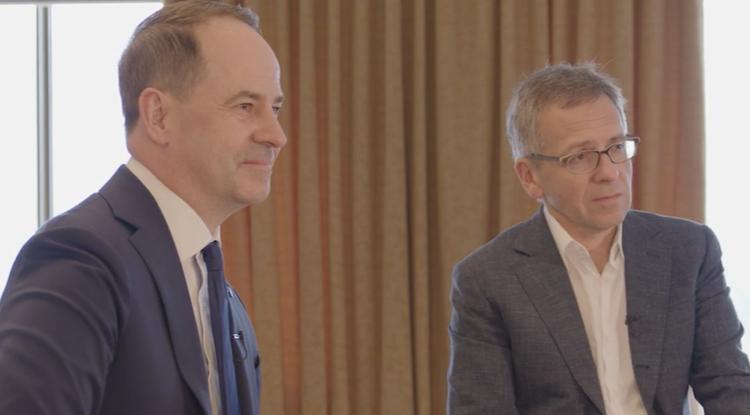
Darryl White, CEO of BMO Financial Group, and Ian Bremmer, President and Founder of Eurasia Group and GZERO Media sat down to discuss the “Nort…
PART 2
Top Leaders Speak to the North American Advantage at the US-Canada Summit
June 24, 2024 | Business Strategy, Doing Business In The U.S
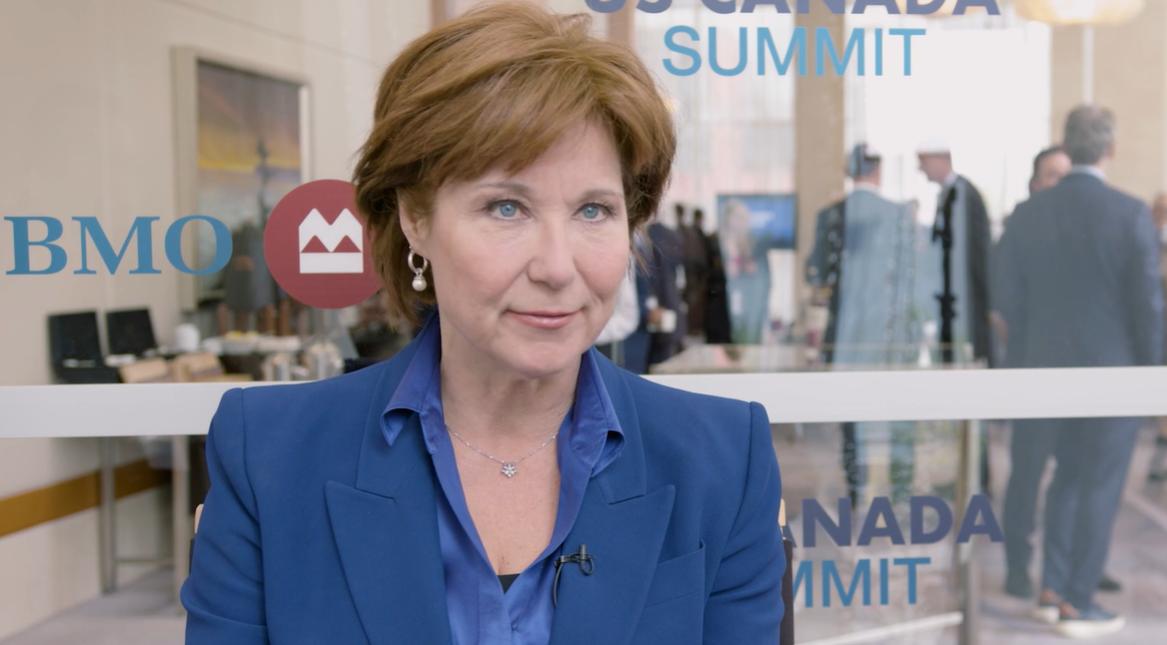
During the 2024 US-Canada Summit that we hosted with Eurasia Group, we sat down with top leaders to discuss the importance of the US-Canad…
PART 3
The US-Canada Partnership: North America’s Economic Outlook
Nadim Hirji | June 24, 2024 | Economic Insights, Doing Business In The U.S
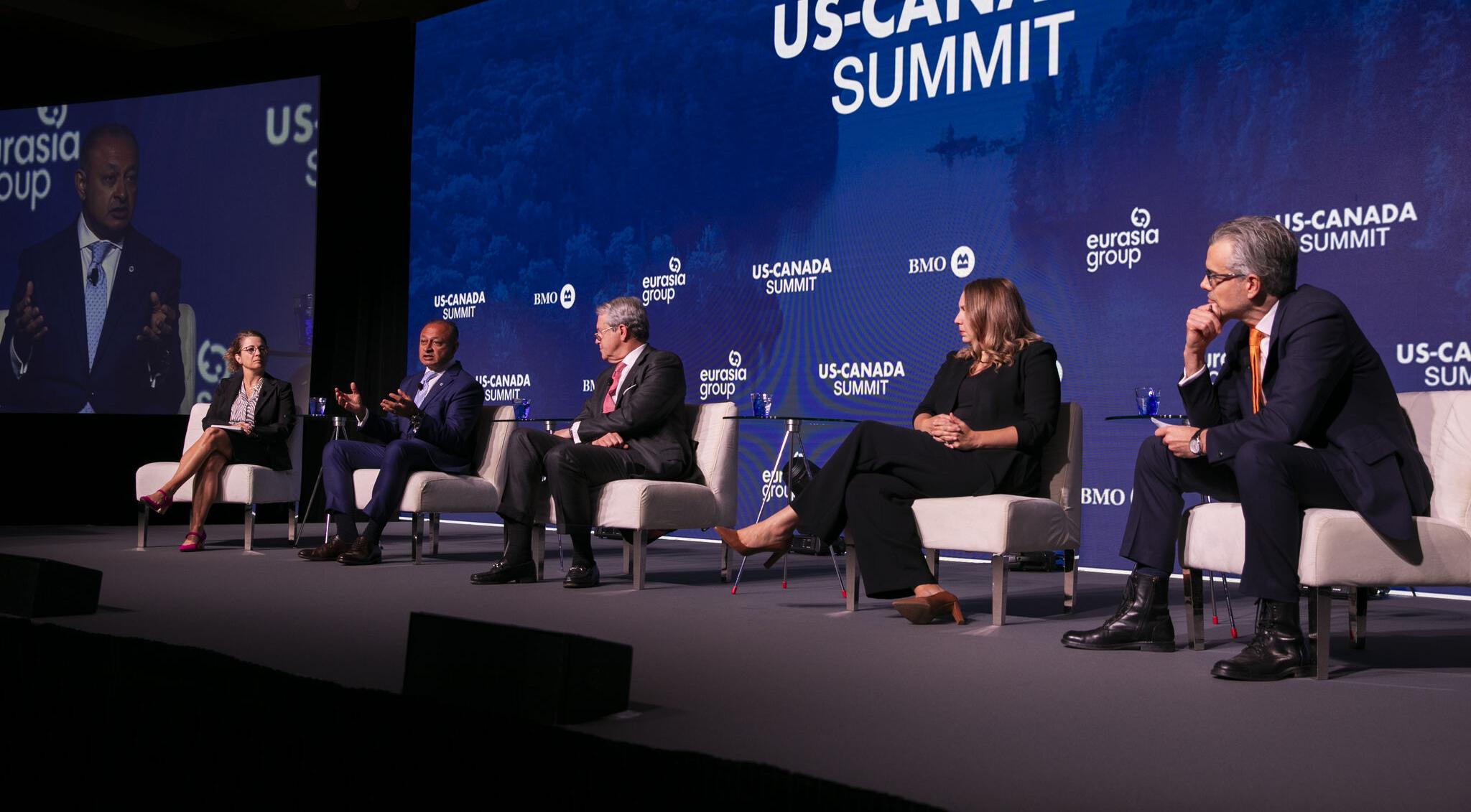
The US-Canada economic relationship is responsible for millions of jobs and generates billions in trade. Against this backdrop, the USMC…
PART 5
The Future of Work in North America: Reskilling and Upskilling
Mona Malone | June 24, 2024 | Business Strategy, Doing Business In The U.S

The nature, culture and meaning of work are undergoing a dynamic transformation: automation, digitization and the advent of generative artificial int…
PART 6
BMO Experts at the 2024 US-Canada Summit
June 24, 2024 | Business Strategy, Doing Business In The U.S
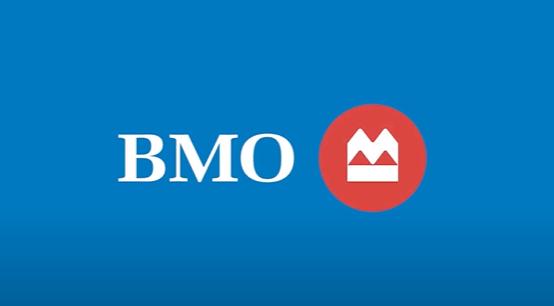
The 2024 US-Canada Summit featured senior decision makers from government, the private sector and society at large, and explored how to better unders…
PART 7
U.S.-Canada Summit Welcome Remarks
Darryl White | June 13, 2024 | Doing Business In The U.S

This is Year two of BMO’s partnership with the Eurasia Group, and I am pleased to welcome all of you here this morning to our U.S.–Canada…
PART 8
The Globe and Mail: For Canada and its U.S. trade relationship, complacency equals sleepwalking
Darryl White | June 06, 2024 | Doing Business Internationally, Business Strategy

This first published in The Globe and Mail on June 5, 2024, authored by Darryl White, CEO of BMO Financial Group and Ian Bremmer, President…
Related Insights
Tell us three simple things to
customize your experience






Banking products are subject to approval and are provided in Canada by Bank of Montreal, a CDIC Member.
BMO Commercial Bank is a trade name used in Canada by Bank of Montreal, a CDIC member.
Please note important disclosures for content produced by BMO Capital Markets. BMO Capital Markets Regulatory | BMOCMC Fixed Income Commentary Disclosure | BMOCMC FICC Macro Strategy Commentary Disclosure | Research Disclosure Statements
BMO Capital Markets is a trade name used by BMO Financial Group for the wholesale banking businesses of Bank of Montreal, BMO Bank N.A. (member FDIC), Bank of Montreal Europe p.l.c., and Bank of Montreal (China) Co. Ltd, the institutional broker dealer business of BMO Capital Markets Corp. (Member FINRA and SIPC) and the agency broker dealer business of Clearpool Execution Services, LLC (Member FINRA and SIPC) in the U.S. , and the institutional broker dealer businesses of BMO Nesbitt Burns Inc. (Member Canadian Investment Regulatory Organization and Member Canadian Investor Protection Fund) in Canada and Asia, Bank of Montreal Europe p.l.c. (authorised and regulated by the Central Bank of Ireland) in Europe and BMO Capital Markets Limited (authorised and regulated by the Financial Conduct Authority) in the UK and Australia and carbon credit origination, sustainability advisory services and environmental solutions provided by Bank of Montreal, BMO Radicle Inc., and Carbon Farmers Australia Pty Ltd. (ACN 136 799 221 AFSL 430135) in Australia. "Nesbitt Burns" is a registered trademark of BMO Nesbitt Burns Inc, used under license. "BMO Capital Markets" is a trademark of Bank of Montreal, used under license. "BMO (M-Bar roundel symbol)" is a registered trademark of Bank of Montreal, used under license.
® Registered trademark of Bank of Montreal in the United States, Canada and elsewhere.
™ Trademark of Bank of Montreal in the United States and Canada.
The material contained in articles posted on this website is intended as a general market commentary. The opinions, estimates and projections, if any, contained in these articles are those of the authors and may differ from those of other BMO Commercial Bank employees and affiliates. BMO Commercial Bank endeavors to ensure that the contents have been compiled or derived from sources that it believes to be reliable and which it believes contain information and opinions which are accurate and complete. However, the authors and BMO Commercial Bank take no responsibility for any errors or omissions and do not guarantee their accuracy or completeness. These articles are for informational purposes only.
Bank of Montreal and its affiliates do not provide tax, legal or accounting advice. This material has been prepared for informational purposes only, and is not intended to provide, and should not be relied on for, tax, legal or accounting advice. You should consult your own tax, legal and accounting advisors before engaging in any transaction.
Third party web sites may have privacy and security policies different from BMO. Links to other web sites do not imply the endorsement or approval of such web sites. Please review the privacy and security policies of web sites reached through links from BMO web sites.
Please note important disclosures for content produced by BMO Capital Markets. BMO Capital Markets Regulatory | BMOCMC Fixed Income Commentary Disclosure | BMOCMC FICC Macro Strategy Commentary Disclosure | Research Disclosure Statements




